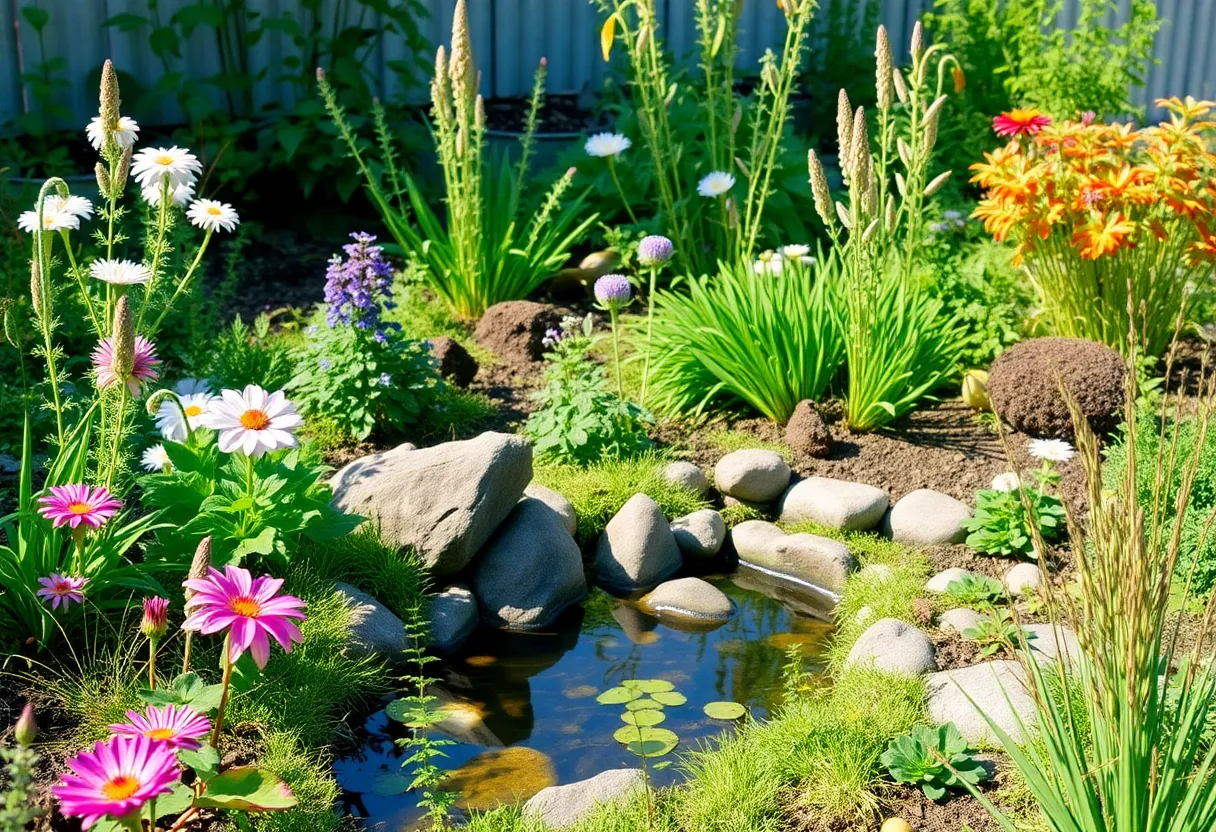7 Essential Tips for Creating a Beautiful Wildlife-Friendly Garden in New York
Transforming a garden into a sanctuary for local wildlife plays a pivotal role in supporting regional biodiversity. This is especially true in New York, where a range of ecosystems—from urban parks to rural landscapes—offer diverse habitats for native species. Incorporating wildlife-friendly practices enhances garden aesthetics while fostering ecological health. Implementing these seven essential strategies ensures your garden becomes a vibrant haven for wildlife, contributing positively to the local environment.
1. Incorporate Native Plants
Native plants form the cornerstone of any wildlife-friendly garden. These species are *adapted to New York’s distinct climate and soils*, ensuring resilience and low-maintenance growth. They provide critical food sources—such as berries, seeds, and nectar—and shelter for a broad spectrum of fauna, including birds, pollinators, and insects. For example, planting Eastern red cedar offers berries that attract songbirds, while shadblow honeysuckle supplies early spring nectar for pollinating insects. Choosing native flora supports the *natural food web*, enhances habitat connectivity, and reduces the need for chemical interventions.
2. Create Diverse Habitats
A successful wildlife garden must offer a variety of habitats tailored to the needs of different species. Incorporate a mix of trees, shrubs, ground covers, and native wildflowers to provide shelter, nesting sites, and food sources. Consider establishing a small pond or birdbath to supply water for drinking and bathing. Leaving parts of the garden undisturbed with leaf litter creates shelter for insects, amphibians, and small mammals, fostering natural hibernation spots. Such diversity attracts a wide array of species, from ground-dwelling insects to canopy-feeding birds, and encourages ecological resilience.
3. Reduce Lawn Areas
Large, pristine lawns typically contribute little to wildlife sustenance. Shifting from traditional turf to native wildflower meadows or naturalized plantings significantly enhances ecological value. These areas provide nectar, seeds, and habitat for pollinators, birds, and insects. Furthermore, reducing lawn size lowers water and fertilizer use, diminishes mowing emissions, and creates a more authentic natural landscape. This transition supports pollinator populations, encourages native plant growth, and fosters a more sustainable* landscape overall.
4. Provide Water Sources
Natural water availability is essential for wildlife survival. Installing a birdbath, pond, or shallow dish with stones creates safe bathing and drinking spots. The stones serve as perches for insects and small birds, offering safety from predators. Regularly refreshing the water prevents stagnation, reducing mosquito breeding and keeping the habitat inviting. Access to water directly influences the diversity and density of the species frequenting your garden, from insects to mammals. Prioritizing water features can dramatically improve habitat quality.
5. Limit Pesticide Use
High pesticide applications disrupt the delicate balance of garden ecosystems. They harm beneficial insects—such as pollinators and natural predators—and can have cascading effects up the food chain. An Integrated Pest Management (IPM) approach emphasizes monitoring pest levels, encouraging natural predators, and applying chemical controls only as a last resort. Employing *companion planting*, encouraging native predatory insects, and maintaining plant health are critical components of IPM. This strategy promotes a balanced ecosystem and preserves native predatory species that naturally control pests.
6. Plant for All Seasons
To ensure continuous support for wildlife, your garden must offer resources throughout the year. Use a diverse palette of species that bloom at different times, such as early spring bulbs, summer wildflowers, and late-season seed-producing plants. Incorporate evergreens to provide shelter during harsh winter months, and select deciduous trees and shrubs that supply nectar and seeds in spring and summer. This sequential flowering and seeding design guarantees a steady supply of nectar, pollen, and habitat, crucial for sustaining pollinators and seed-eaters year-round.
7. Educate and Engage
Active engagement with neighbors and community groups amplifies the impact of wildlife-friendly gardening. Sharing knowledge about native species, habitat creation, and sustainable practices encourages collective efforts to preserve biodiversity. Hosting workshops, participating in community gardens, and organizing local planting days can foster a regional culture of ecological stewardship. Educating others not only broadens awareness but also helps build larger habitats that benefit a wider array of species, creating a network of thriving ecosystems across neighborhoods.
Conclusion
Implementing these seven strategies forms a comprehensive approach to creating a vibrant, sustainable, and beautiful wildlife habitat in your New York garden. By emphasizing native plants, habitat diversity, water sources, and minimal chemical intervention, you cultivate a balanced ecosystem that benefits both wildlife and your landscape. Equally important is fostering community awareness—your efforts can inspire broader ecological initiatives. The result is a resilient garden** where native species flourish, ecological processes are supported, and natural beauty is preserved for generations to come.
Author: STAFF HERE NEW YORK WRITER
The NEW YORK STAFF WRITER represents the experienced team at HERENewYork.com, your go-to source for actionable local news and information in New York, the five boroughs, and beyond. Specializing in "news you can use," we cover essential topics like product reviews for personal and business needs, local business directories, politics, real estate trends, neighborhood insights, and state news affecting the area—with deep expertise drawn from years of dedicated reporting and strong community input, including local press releases and business updates. We deliver top reporting on high-value events such as New York Fashion Week, Macy's Thanksgiving Day Parade, and Tribeca Film Festival. Our coverage extends to key organizations like the Greater New York Chamber of Commerce and United Way of New York, plus leading businesses in finance and media that power the local economy such as JPMorgan Chase, Goldman Sachs, and Bloomberg. As part of the broader HERE network, including HEREBuffalo.com, we provide comprehensive, credible insights into New York's dynamic landscape.





